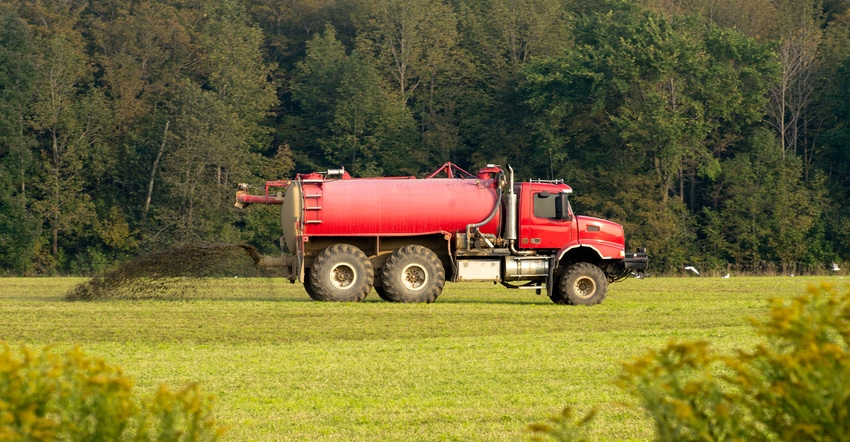January 3, 2022

I recently spoke with more than 20 farmers one on one as I finished up some sample collection. With a timely harvest, it was nice to catch the farmers in some post-holiday bliss.
A topic kept coming up: worry over how much manure the neighbors were applying. Grumbles over manure in Wisconsin may be common, but I was surprised by the number of comments from dairy farmers, especially in connection to their water quality concerns.
Applying manure
The conversations spurred me to consider how farms use manure and how avoiding overapplication is one strategy to mitigate the risk of nutrient runoff or leaching. Michigan keeps detailed records of concentrated animal feeding operations’ field-level manure nutrient applications, including soil-test phosphorus (STP) values, yield goal, actual yield, manure application rates and additional synthetic fertilizer. A recent study used data from 13 CAFOs in a Michigan watershed to increase understanding of how manure nutrients are used and how nutrient use efficiency can be increased to decrease the impact manure has on Lake Erie’s toxic algae blooms. The same issues affect many Wisconsin lakes.
Researchers found that inaccurate manure nutrient estimates, additional synthetic fertilizer and unrealistic crop yield goals led to nutrient application rates greater than recommended and allowed. Applied liquid manure was, on average, lower in both nitrogen and phosphorus than as excreted book values, likely due to dilution and nutrients lost during storage. Applied solid manure was higher in both N and P, likely due to loss of water and the addition of bedding material. Manure analysis close to application is vital for accurate knowledge of nutrients applied.
Nutrient removal amounts are based on crop yields, yet stated yield goals were higher than actual yield 67% of the time. Although a lot of climate and management factors impact yield, some farms consistently missed their goals: 7 of the 12 farms reached their yield goals less than 50% of the time. By overestimating yield potential, additional nutrients were applied onto fields and not removed with harvest, leaving excess nutrients available to enter bodies of water.
In addition to manure, a majority of fields (63%) received synthetic N fertilizer, while 36% received synthetic P. Overapplication was much more common in fields with both manure and synthetic fertilizer. This highlights an opportunity to decrease input cost through accurate nutrient crediting. Interestingly, overapplication of nutrients was not systemic. One farm exceeded allowable rates on 29% of its N and 19% of its P2O5 applications, while a majority of others had only a handful of overapplication instances.
Water quality issues
Researchers calculated that this overapplication of manure could have instead fertilized an additional 11,800 acres per year, which would almost double the amount of acres on which manure was actually applied — 12,350 acres per year. During the study, manure was spread on only 40% of farms’ available land. The other 60% may not require additional fertility based on STP levels, but if field location was an issue, with high synthetic fertilizer costs, it may be an economical and environmentally sound decision to travel farther distances.
By actively managing fields to decrease STP, farms decrease two pathways for P loss. Particulate P is bound to soil, so when water carries away soil in a runoff event, P is attached to the soil and is lost. This type of loss is common during precipitation events when the soil has little residue and is not frozen.
Dissolved P is the fraction of P in solution with water, and therefore does not need soil movement to be lost. Dissolved P is more commonly lost in systems where P is not incorporated and concentrated at the surface, like no-till, and during precipitation events or snowmelt while the ground is frozen, since water cannot infiltrate into the soil. That is why in addition to avoiding overapplication of manure, applying manure before the ground freezes is vital to keeping nutrients on the field.
Decreasing STP by minimizing inaccurate manure nutrient estimates, additional synthetic fertilizer and unrealistic yield goals is one method to decrease agriculture’s impact on local bodies of water. Managing residue, tillage, nutrient placement, cover crops and crop rotation are all valuable tools at different times of the year to increase nutrient use efficiency while practicing responsible land use. Because neighbors provide more than an occasional cup of sugar, trust is a necessary ingredient for strong, long-lasting communities.
Zegler is the ag and water quality outreach specialist with the University of Wisconsin-Madison Division of Extension.
You May Also Like




